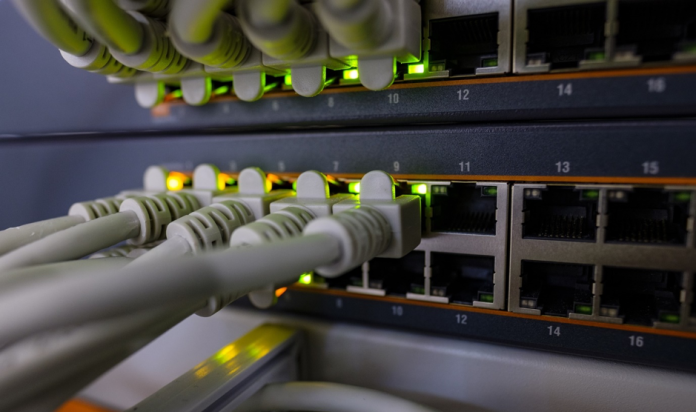How Long is an Ethernet Cable:
You probably find yourself frequently in a situation where you must run the ‘network cable’ outside to connect it to your home or office network. It often happens when you have a network that connects more than one computer in a private local area or home network.
Tech-savvy people who recognize the advantages of network cables prefer wired networking over Wi-Fi signals. These network cables are called Ethernet cables and come in various types and bandwidths.
Whether you want to wire your home network or connect your office workstation at a considerable distance from the main router, it’s reasonable to wonder how long is an Ethernet cable and what arrangements are needed to ensure maximum data transmission efficiency.
Scroll down to find out everything you need about Ethernet cables and the maximum cable length you can use without sacrificing efficiency and signal quality.
What is an Ethernet Cable?
Ethernet cable, more commonly referred to as network cable, is a family of wired networking technologies. These cables are typically attached to servers and workstations from one end and routers, modems, or switches from the other.
Ethernet cables are more efficient and provide greater data transmission security than Wi-Fi signals. However, Ethernet cables are typically limited by their length and durability. To ensure data transmission efficiency and signal reliability, you need to consider a cable type that best fits your need and choose an appropriate length to optimize data transmission performance.
Ethernet Cable Types and Categories
Ethernet cables resemble a traditional telephone or electric cable but are relatively bigger and have more cables than a telephone wire. Ethernet cable has a wider RJ45 connector on both ends, which connects a computer to a router.
Categories
Ethernet cables are divided into categories; each of these categories has a different data rate and bandwidth. The most commonly-used categories are CAT5, CAT6, CAT7, CAT8 UTP, and STP Ethernet cables. A higher CAT number usually denotes a higher data transmission speed and bandwidth. Check out this chart for details related to each category.
Types
UTP (unshielded twisted pair) and STP (shielded twisted pair) are two major types of ethernet cables. STP cables are contained inside a foil or mesh to limit electromagnetic interference that weakens or distorts a signal. STPs have a higher data transmission rate than UTPs but require more maintenance.
UTPs are unshielded but provide a suitable data and voice transmission frequency range. UTPs offer data transmission rates as high as 1000 Mbps compared to 10-100 Mbps in STPs. For this reason, UTPs are preferred over STPs for indoor wiring in local area networks.
Does Ethernet Cable Length Matter?
Ethernet cables provide a medium for electric signals to travel from one point to another. Since you cannot practically bring electromagnetic interference (EMI) and resistance down to nil, the electric signal loses its strength after some distance. Therefore, long wire lengths can affect the signal’s strength and integrity. Wondering how long is an Ethernet cable for local and home networks? Let’s find out details for individual settings:
1. How Long is an Ethernet Cable for Local Network
Ideally, an Ethernet cable should not exceed 100 meters long (328 feet). This is essentially true for running the Ethernet cable outdoors. A more than 100 meters length will deteriorate signal strength and data quality to the point that the signal becomes undetectable and uninterpretable. Local networks typically use switches and repeaters to boost signal strength every 100 meters and maintain data integrity.
2. How Long is an Ethernet Cable for Home Network
You can use different varieties of Ethernet cables in a home setting according to your requirements. However, the rule for the maximum possible length in a single stretch remains the same. Try to limit the distance between workstations, servers, and routers to 100 meters. Alternatively, you can use Ethernet extenders for longer distances or leverage wireless Ethernet extensions. A media extender is another cost-effective option for home networks that converts Ethernet cable runs from copper to fiber cable.
3. How Long is an Ethernet Cable: Length vs. Speed
The biggest advantage of a wired network is its speed. Networks can achieve the fastest speed available in Ethernet bandwidth using appropriate CAT cables. However, extending Ethernet wires to long distances without signal boosters can affect their speed and data quality.
If you experience data transmission speed problems within the recommended 100 meters range, check for other factors that may have influenced distortion and signal loss, such as cracks in the wire, the presence of a strong electromagnetic field nearby, malware, incompatible network hardware, router inefficiency, and inappropriate cable category.
FAQs
Why is Ethernet limited to 100 meters?
This is because the signals lose their strength over long distances. Since more workstations are connected to the ethernet cable, signals can get distorted if two or more workstations simultaneously send signals over long ethernet cables.
How can I run Ethernet longer than 100 meters?
You can extend an Ethernet cable longer than 100 meters, but in that case, you need an Ethernet repeater or network extender with a power supply every 100 meters to boost signals.
Final Thoughts
Ethernet cables are the best data transmission medium for home and local area networks. Choose the right Ethernet cable category that suits your network requirement and data transmission needs. For example, you may require a higher CAT cable if you plan to set up a home network for gaming or video streaming.
Try to limit the distance between two connectivity points to 100 meters or install extenders to boost signals. We hope you’ve found your answer to how long an Ethernet cable is in both home and local area network settings and which factors can affect data transmission speed and durability.














